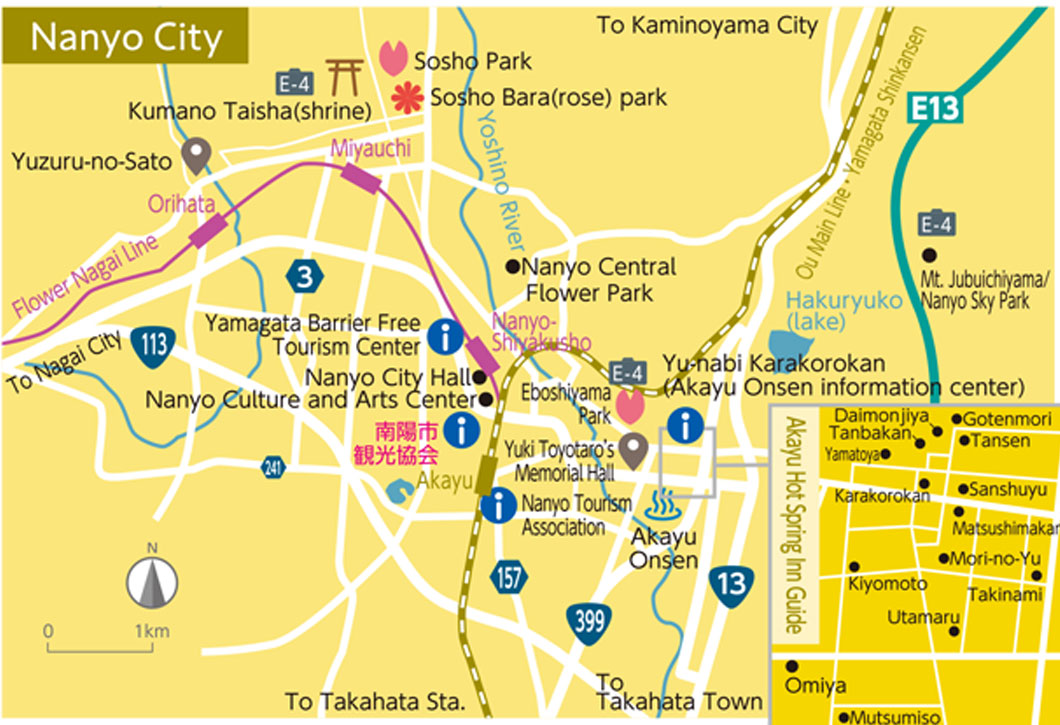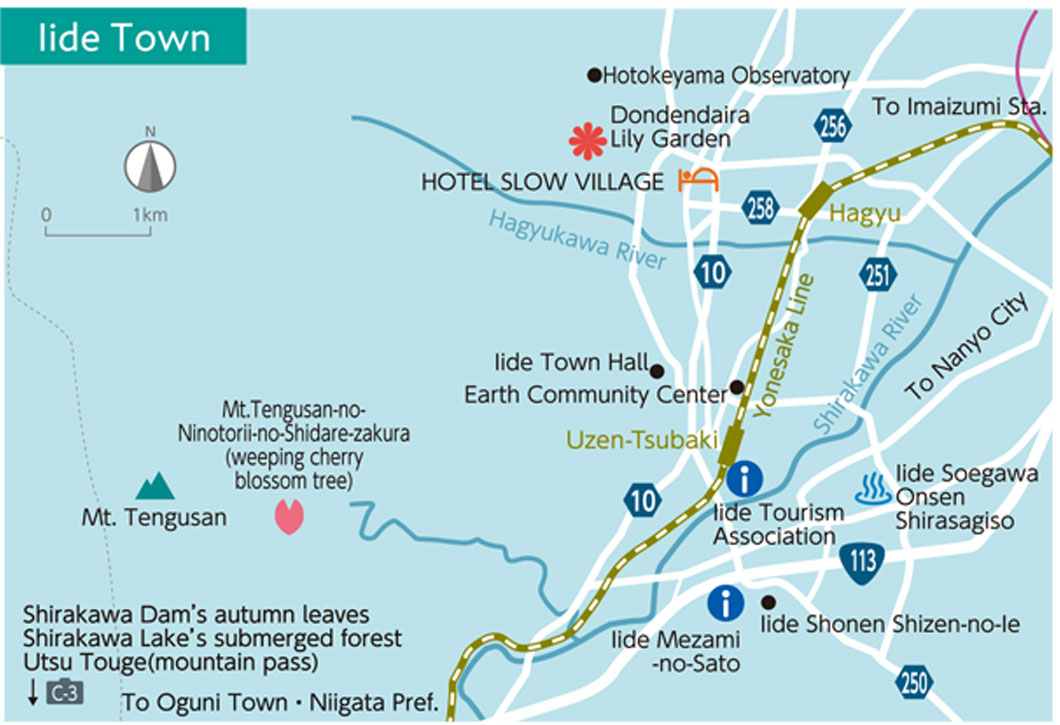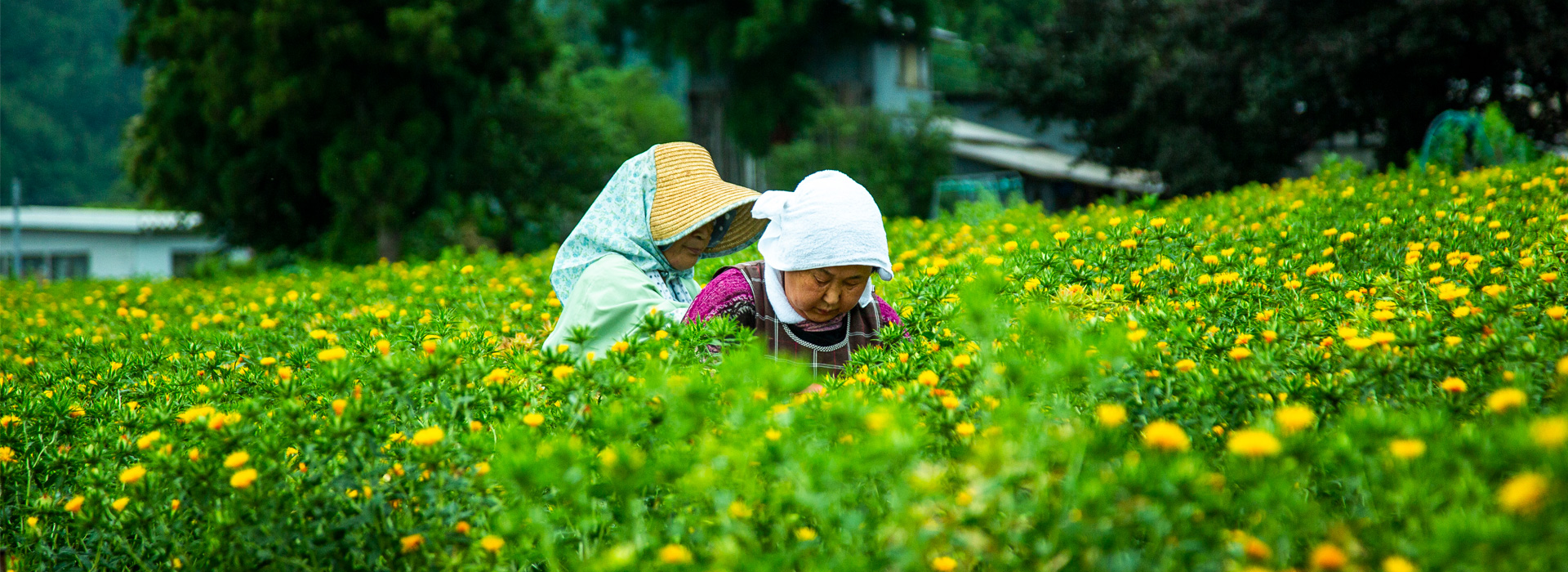
Technology that Connects People’s Lives and Occupation
A Town that Makes Japan’s Red
It is unknown when the safflower was brought to Yamagata, but it has been grown here since before the Edo Period. According to Murakagami, safflowers are grown in 35 villages of the 218 in the Okitama Region, and 14 of those villages are in the Shirataka Town area. There are records that over half of the safflower production was done in Shirataka Town in 1646. In the Edo Period, a technique that enhances the red and preservability of benimochi safflowers was developed. It was known as “the best safflowers” nationally by merchants. Benimochi safflowers were valued more than 100 times that of rice and 10 times that of gold.
Growing safflowers stopped for a period during the Pacific War, but after the war Yamagata culture philanthropists started saying, “Yamagata is the land of safflowers.” Farmers started replanting safflowers with the remaining seeds and reinvigorated production. Shirataka Town became the number one producer of benimochi, suribana, and ranbana safflowers with over 60% of national shares. The brilliant and beautiful red of safflowers are Japan’s red. In addition to lipsticks and medicines, the confidence and pride that has been used in traditional Japanese ceremonies since ancient times supported the revival of Shirataka safflowers.
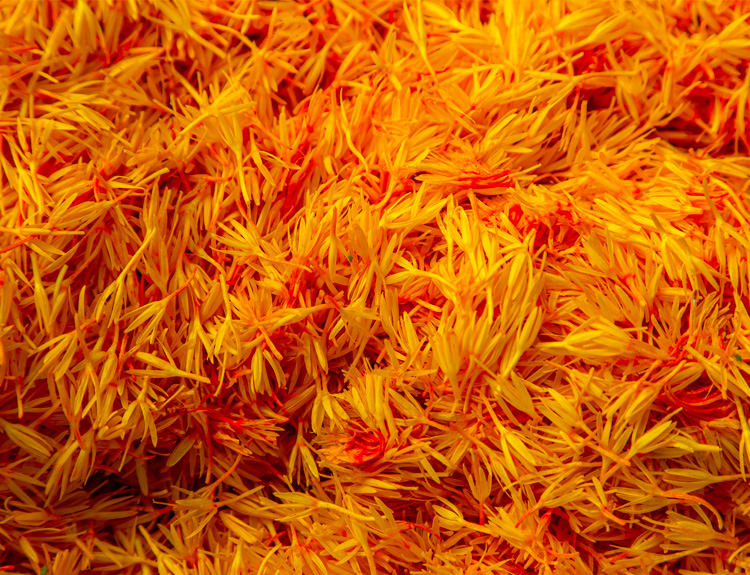
Miyama Washi
Miyama Washi was used as a wrapping paper so that safflowers and blue ramie would not be damaged during transportation. In the Miyama area, papermaking is carried out as a winter work for farmers, and its history can be traced back to 1641. The process of steaming, grinding, and kneading camellia, and the traditional manufacturing method of using Panicled hydrangea that grows naturally in the mountains have been highly evaluated. It has become a designated intangible cultural property of the prefecture. Currently, Megumi Takahashi of the Miyama Washi Promotion Research Center is the only supporter. Miyama Washi with its natural quality is also used for elementary, junior high, high school, and university diplomas there.
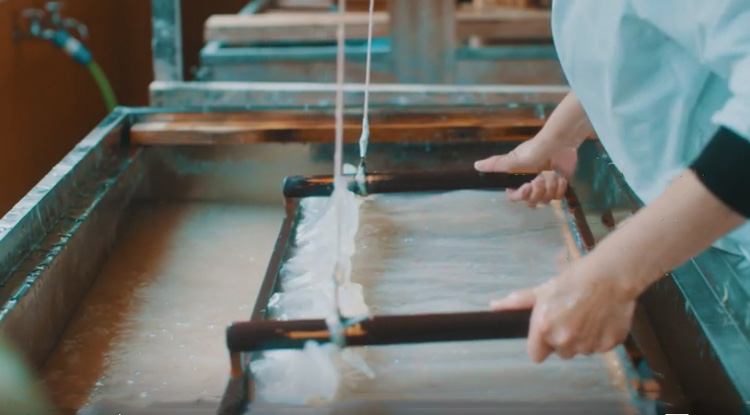
Raising, Spinning, and Weaving Silkworms
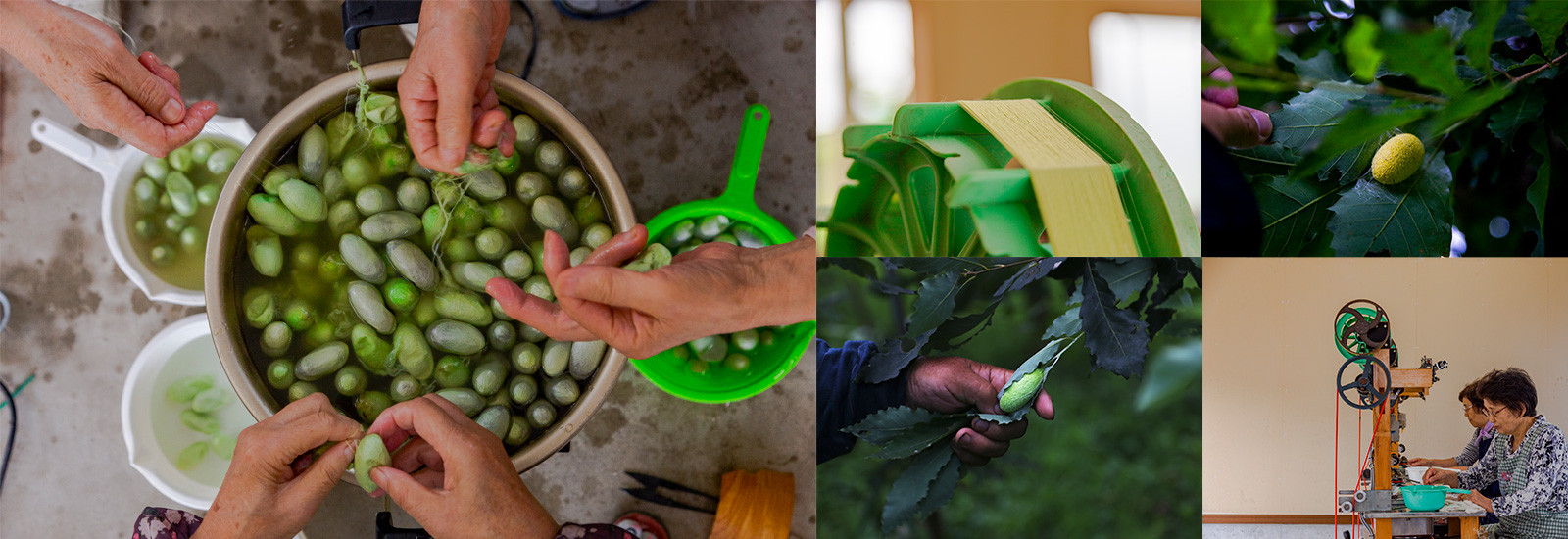
Silkworm Raising and Shirataka Town
The Shirataka district has raised silkworms since the early modern period, and the industry of tsumugi textiles was born then. Honba Yoneryu (Shirataka Itajime Kogasuri) made from silk straight from silk worm cocoons dyed using the itajime process has been designated a traditional craft by the Minister of Economy, Trade and Industry. It is also called Okitama Tsumugi. Itajime kasuri dying is a technique for dying the threads that weave the kasuri pattern. It is done by wrapping several grooved painted maple kasuri boards with thread, pressing the boards together, and adding dye to dye the thread. It used to be a technique widely used around Japan, but is now a precious technique to only two workshops, Komatsu Orimono Kobo and Shirataka Ori Arato Kobo.
A Way of Living where the Land and People are Entertwined
In July when there is less need to tend to the rice crops, the people pick safflowers. In early summer, they start raising silk worms. From summer to fall, they gather the silk from the cocoons and spin thread, and in winter, they weave or make Japanese paper. The citizens of Shirataka Town take advantage of the downtime from agriculture. With the decrease of silkworm-raising their livelihood as taken new form, but in response to social circumstances and environment they continue to pass on the tradition. At the workshops where Shirataka Tsumugi has become their signature product, they are searching for new possibilities.
Elegant strength is needed to find a livelihood to live here making the best use of the land. It’s possible to feel that strength in the traditional work, the tools, and the people.
INFORMATION & MAP
- Hana no Yakata
- 〒992-0821 Yamagata Prefecture, Nishi-Okitama gun, Shirataka Town, Juou 1707-1
- TEL:0238-85-1883
- Miyama Washi Promotion Research Center
- 〒992-0776 Yamagata Prefecture, Nishi-Okitama gun, Shirataka-machi, Oaza Miyama 2527
- Tel:0238-85-3426
- Komatsu Orimono Kobo
- 〒992-0821 Yamagata Prefecture, Nishi-Okitama gun, Shirataka-machi, Oaza Juou 2200
- Tel:0238-85-2032
- Shirataka Ori Arato Kobo
- 〒992-0832 Yamagata Prefecture, 西憧賜郡, Shirataka-machi, Oaza Arato Otsu 1202-3
- Tel:0238-85-2238
- Shirataka Tenen no Kai (Office: Shirataka Town Department of Commerce and Tourism)
- 〒992-0892 Yamagata Prefecture, Nishi-Okitama gun, Shirataka-machi, Oaza Arato Ko 833
- Tel:0238-85-6136


